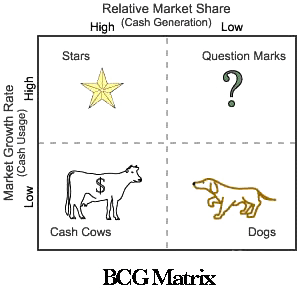-
 The Three Box Solution
The Three Box SolutionVijay Govindarajan (2016)
Amazon book review: Like many who may read this review, my shelves have a range of books on the topic of 'innovation'. Over the years, I have learned what makes a good book on this topic:
-
- Is it well written?
-
- Does it add to my knowledge, or does it in some way codify my disparate experiences to help me do my work better?
-
- Do I feel compelled to read this cover to cover?
-
- Do I sit with a pencil in hand, making margin notes, scribbling on the inside of the cover, underlining valuable insights?
This is one book that emphatically answers YES to all these.
If this had been published 18 months ago, I would have given it to a client who was so wedded to Box 1 thinking that all attempts to introduce a Box 3 culture were almost doomed when the key manager left and my external inputs were not involved.
This book should not just be on the shelves of senior (and ambitious) management of companies; it should be imprinted on their soul.
-
-
The challenge of innovation within organisations (2)
While many books have been written about ‘innovation’ and the challenge of ‘crossing the Valley of Death’, few of these tackle the senior management issue facing a company of managing the current business and also effectively undertaking work for the future of the business.
 Case studies have been written about the ‘skunk works’ of Lockheed Martin as an example of how a well-managed business ended up undertaking ‘non-linear’ innovation (to use Govindarajan’s terminology) through the separation of ‘innovation’ from ‘production’. Osterwalder’s model (see previous page) illustrates this separation very clearly, and shows the importance of managing innovation appropriately.
Case studies have been written about the ‘skunk works’ of Lockheed Martin as an example of how a well-managed business ended up undertaking ‘non-linear’ innovation (to use Govindarajan’s terminology) through the separation of ‘innovation’ from ‘production’. Osterwalder’s model (see previous page) illustrates this separation very clearly, and shows the importance of managing innovation appropriately.Professor Vijay Govindarajan presents a management framework for running an organisation where current and future business ambitions are managed together – but in totally different styles. One of the cries in innovation and brain-storming activities is to ‘think out of the box’ and this is the key point that Govindarajan makes: implementing effective innovation needs to be protected from the current business, as much as the current business needs to be protected from dilution of effort on innovation. By using the ‘box’ metaphor, he makes it easier to appreciate the differences and approaches. He emphasises the different objectives and management styles:
-
With reference to current business activities, “The skills and experience you apply … allow you to operate at peak efficiency and execute linear innovation in your core businesses.”
-
With reference to effective implementation of innovation, “The skills … allow you to generate nonlinear ideas and convert them, through experimentation, into new products and business models.”
-
With reference to current business activities, “The skills and experience you apply … allow you to operate at peak efficiency and execute linear innovation in your core businesses”
-
With reference to effective implementation of innovation, “The skills … allow you to generate nonlinear ideas and convert them, through experimentation, into new products and business models.”
(‘The Three-Box Solution’; Govindarajan, V.; p12-13; pub. Harvard Business Review Press, 2016)
By going through his three box model – the second box is all about being willing to destroy the present or the past (i.e. being willing to abandon processes that are profitable today, in search of new processes that suit the future) – Govindarajan makes it clear how difficult it is to manage innovation and bring its fruits to market.
 It is instructive to compare Govindarajan’s Three Box Solution to the well-known Boston Consulting Group (BCG) matrix that has benefited many companies over the years in managing their portfolios of technology or products. In Govindarajan’s model, Box 1 might be considered to represent the BCG Cash Cows, while the Box 3 might be found to include The Question Marks (or Problem Child). In the BCG model, the Question Marks are recognised as needing significant resources to develop a good market share and a decision is made about how to manage these business units based on NPV forecasts (for example). But the opportunities represented by the Question Marks are not explored. On the other hand, Govindarajan’s Box 3 makes it clear how to assess business units like this and how to manage them – i.e. how to tackle the Question Marks.
It is instructive to compare Govindarajan’s Three Box Solution to the well-known Boston Consulting Group (BCG) matrix that has benefited many companies over the years in managing their portfolios of technology or products. In Govindarajan’s model, Box 1 might be considered to represent the BCG Cash Cows, while the Box 3 might be found to include The Question Marks (or Problem Child). In the BCG model, the Question Marks are recognised as needing significant resources to develop a good market share and a decision is made about how to manage these business units based on NPV forecasts (for example). But the opportunities represented by the Question Marks are not explored. On the other hand, Govindarajan’s Box 3 makes it clear how to assess business units like this and how to manage them – i.e. how to tackle the Question Marks.Govindarajan’s Box 3 makes it clear how to assess business units like this and how to manage them; in other words, he provides guidance on how to assess business units like this (the Question Marks) and how to convert them into Stars..
By providing a management framework, he also provides an opportunity to deploy other tools. For example, as a Box 3 idea begins to mature, so tools like Osterwalder’s Business Model Generation can be a clear benefit as it has a visual mapping tool to address different areas of a new business. Bernadette Jiwa’s short book “Difference” (2014) provides a similar visual tool where a new business may need to explore the difference between the existing core business and the new one, and how to address this.
Govindarajan’s book draws on his considerable experience, and is a valuable reference for all senior (and aspiring) executives.
-




